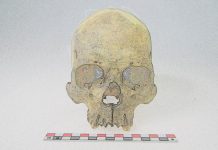
Scientists have made an exciting discovery on the Isle of Skye, Scotland, finding a new type of ancient flying reptile, known as a pterosaur.
This discovery, made by experts from the Natural History Museum, University of Bristol, University of Leicester, and University of Liverpool, shines a light on a time long gone and shows us how diverse and widespread these creatures were.
The newly found pterosaur belongs to a group called Darwinoptera, which lived more than 25 million years ago, from the late Early Jurassic to the end of the Jurassic period.
This period is crucial in the story of the evolution of pterosaurs, the flying reptiles that lived alongside the dinosaurs.
What makes this discovery even more special is that it reveals these creatures were around much earlier and were more common across the globe than we thought.
The research, published in the Journal of Vertebrate Paleontology, introduces us to this new species and explains its significance in understanding the early days of pterosaur evolution.
Finding fossils from the Middle Jurassic period (the time when this pterosaur lived) is rare and often these fossils are not complete. This has made it hard for scientists to piece together how pterosaurs evolved.
But this discovery from Scotland provides a clearer picture, showing that all the main groups of Jurassic pterosaurs were already in existence earlier than previously believed.
The remains found include parts of the pterosaur’s shoulders, wings, legs, and spine. Many of the bones are still stuck in rock and had to be studied with the help of CT scanning technology.
Professor Paul Barrett, one of the senior researchers on the project, expressed his surprise at finding such a creature in the UK, as most of its closest relatives have been found in China.
This suggests that this advanced group of flying reptiles appeared sooner and spread quickly around the world than scientists had previously thought.
The team named the new species Ceoptera evansae. “Ceoptera” combines the Scottish Gaelic word for mist, “Cheò”, with the Latin word for wing, “-ptera”, paying homage to the Isle of Skye’s nickname, the Isle of Mist. The name “evansae” is in honor of Professor Susan E. Evans, recognizing her extensive research, particularly on the Isle of Skye.
Dr. Liz Martin-Silverstone, the lead author of the study, highlighted the importance of this find, noting that the period from which Ceoptera comes is key to understanding pterosaur evolution.
Discovering more bones hidden within the rock, essential for identifying Ceoptera’s type, made the find even more significant.
This discovery takes us a step closer to figuring out the origins and evolution of these advanced pterosaurs.
This discovery not only adds a new chapter to the story of pterosaurs but also opens up new questions about the history of life on Earth, showing how much more there is to learn about the ancient creatures that once roamed our planet.



